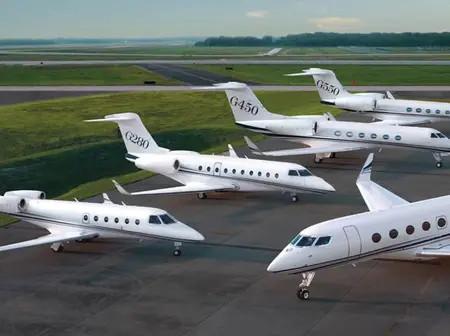Private planes have long been a symbol of wealth and exclusivity, offering flexibility and convenience unmatched by commercial airlines. In Kenya, however, the reality of private aviation goes far beyond the luxury image.
Owning a plane comes with a financial commitment that stretches from the moment of purchase to the day-to-day operations.
From taxes and levies to hangar fees and fuel, the costs quickly escalate into the millions of shillings each year.
The first hurdle for aspiring private plane owners in Kenya is the purchase itself. Aircraft prices vary significantly depending on the type and age.
A used Cessna 172, one of the world’s most popular light aircraft, has recently been listed at about Ksh46.3 million, while turboprops such as the Pilatus PC-12 or King Air typically sell for several million dollars. For business executives eyeing light or midsize jets, the price tag easily climbs into the tens of millions of dollars.
Importing a plane into Kenya adds another layer of expense. While customs import duty is often waived, buyers must still account for 16 per cent VAT, the Import Declaration Fee, and the Railway Development Levy, which can add up to millions of shillings depending on the aircraft’s value.
Further, registration with the Kenya Civil Aviation Authority (KCAA) is also mandatory and includes licensing, inspections, and airworthiness certification, all of which come at a cost.
Owning a plane means facing annual expenses regardless of how often the aircraft is flown. Hangar space at Nairobi’s Wilson Airport or other busy fields is one of the first costs, with monthly rates often exceeding Ksh129,000 for small aircraft, and significantly higher for turboprops and jets.
Insurance is another major item. Premiums cover hull and liability risks, and depending on the aircraft’s size and operations, policies can run into hundreds of thousands of shillings annually.
Staffing is equally unavoidable for owners who cannot fly themselves. Private pilots in Kenya typically earn between Ksh132,000 and Ksh420,000 per month, with turboprop and jet captains demanding even higher salaries.
Additionally, KCAA requires regular maintenance checks, inspections, and airworthiness certifications, which incur further fixed costs each year.
The most significant expenses arrive when the aircraft is actually in the air. Aviation fuel is among the largest variable costs, with Jet A-1 currently retailing at about $0.53 per litre or Ksh68.5, based on September 2025 prices. Even small piston-engine planes consume fuel quickly, and turboprops and jets burn substantially more per hour.
Operating costs vary depending on the aircraft. A Cessna 172 typically costs between USD $100 and $200 per hour (Ksh2,900–Ksh25,800) to operate. Turboprops such as the King Air average between USD $800 and $1,500 per hour (Ksh103,000–Ksh194,000).
For light and midsize jets, costs escalate to USD $2,000–4,000 per hour (Ksh258,000–Ksh516,000). These figures include fuel, maintenance reserves, and routine operating costs but exclude unexpected repairs or downtime, which can further inflate expenses.
Here’s a simplified estimate of what private aircraft ownership in Kenya looks like across different categories:
(All estimates based on September 2025 exchange rate of KSh 129.2 = USD $1. Actual costs vary depending on aircraft age, usage, location, and management arrangements.)
Given these numbers, aviation experts argue that owning a private aircraft in Kenya only makes sense for individuals or companies that fly frequently — typically more than 200 hours annually.
For those who fly less frequently, on-demand charter services or fractional ownership programs often deliver significantly better value. These options provide access to private aviation without the heavy fixed costs of full ownership, allowing clients to pay only when they actually fly.
Overall, owning a private plane in Kenya is possible, but the financial outlay is significant. Buyers face steep upfront costs when acquiring and importing aircraft, followed by unavoidable annual expenses on hangar rent, insurance, and crew salaries. On top of this, variable costs such as fuel and maintenance make every flight an expensive undertaking.
For high-net-worth individuals or businesses that demand constant flexibility and privacy, the investment may be justified. For most people, however, chartering remains the smarter and more cost-effective option.
In Kenya’s private aviation space, prestige comes with a price — and it is one that only a small minority can afford to pay.

Leave a Reply